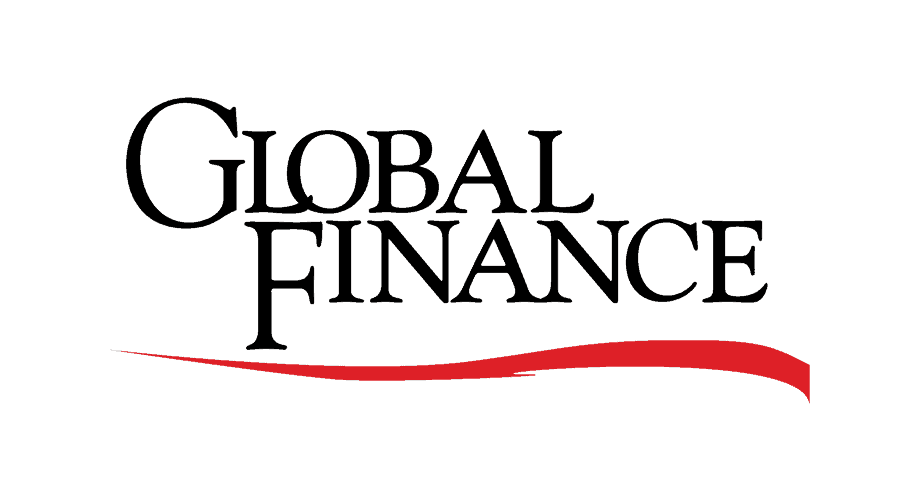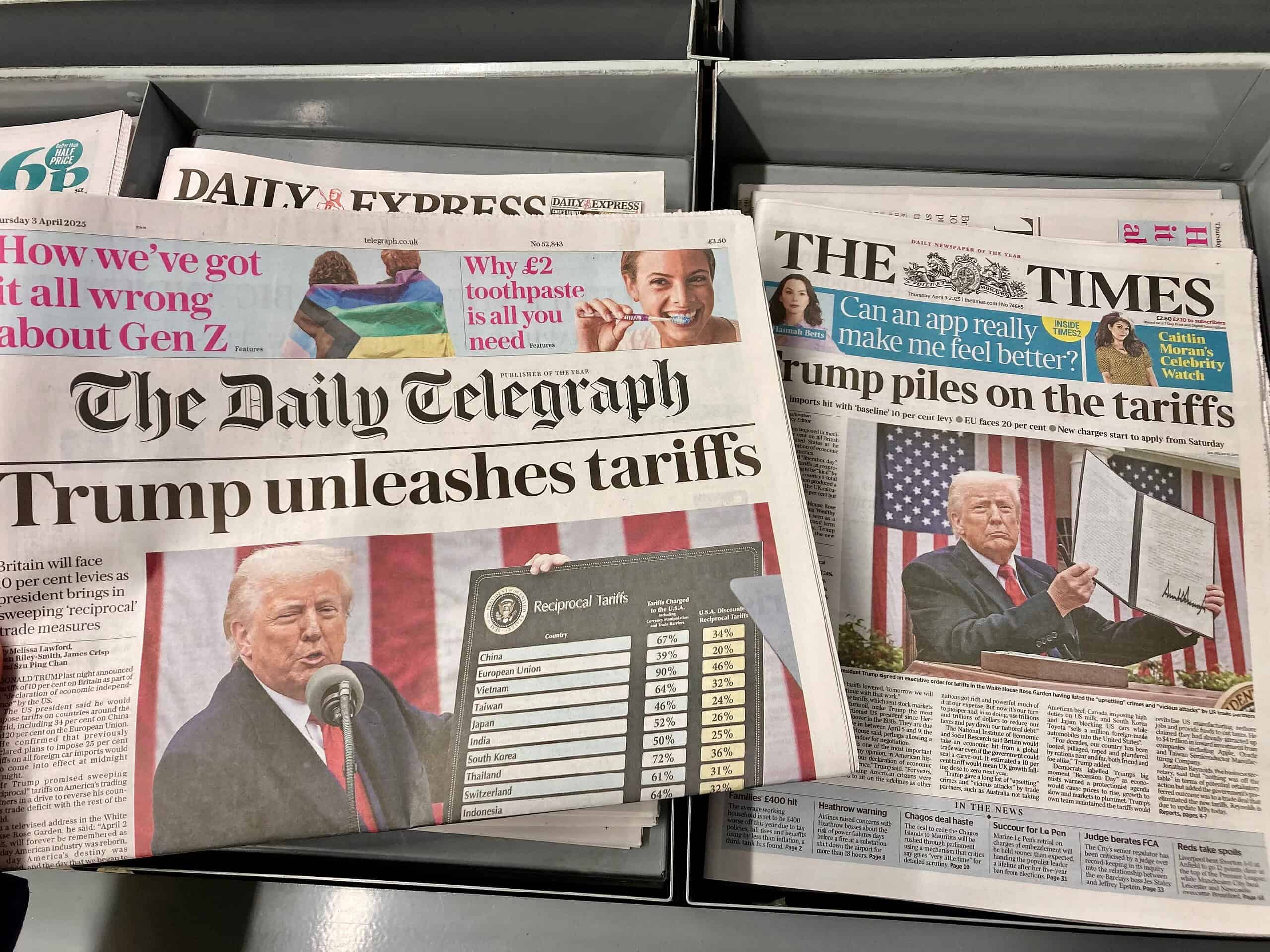World’s Best Banks in Middle East 2025

The country winners for Best Banks in the Middle East region continue to aggressively implement a broad range of initiatives to elevate and modernize their respective franchises. This involves significant service upgrades with new digital features and tailored financial management tools to boost client engagement.
Many banks have achieved first-to-market success with newly launched products and services. Increasingly, this includes improved offerings in the payments segment, more cross-border opportunities, and a focus on more effectively serving the small and midsize enterprise (SME) sector.
Some banks have commenced multiyear transformation strategies to coincide with larger national programs to accelerate financial innovation.
Most institutions recognize the critical importance of workforce development and have implemented formal training and mentorship programs to promote career advancement within the bank.
Regional Winner

Randa Sadik, CEO, Arab Bank
Best Bank in Middle East, Jordan, Lebanon and Yemen| ARAB BANK
Through Arab Bank’s extensive franchise in the Middle East, it continues to deliver robust banking solutions. It is our winner for Best Bank in the Middle East. Its footprint spans 26 countries beyond its home market of Jordan, providing extensive cross-border banking opportunities that contribute to diverse revenue generation and consistent operating performance. With its strong regional business model that includes innovative digital offerings for consumers, wealth, SMEs, and commercial clients, Arab Bank also earned the Best Bank award for Jordan, Lebanon, and Yemen.
New digital offerings and enhancements to existing platforms are fueling growth for Arab Bank. Consumer-banking initiatives include efficiencies with onboarding new clients; instant credit card issuance in Palestine and Egypt; and additional digital-deposit products for clients in Bahrain, Palestine, and the United Arab Emirates (UAE). Arab Bank has also partnered with Royal Jordanian Airlines to offer digital flight-booking capability for improved convenience. Through its Arabi Cross-Border program, expatriates now have easy access to account openings and greater functionality with payments and transfers on the mobile app.
In wealth management, the bank has expanded its franchise through its stake in a Swiss asset manager, and has initiated expansion to markets in Bahrain, Palestine, Qatar, and the UAE. Clients of the bank’s Corporate and Institutional Banking group will benefit from an innovative cash-management solution for improved collection and payment capabilities and greater efficiencies with transaction workflows. Client service is also improved with the introduction of a centralized loan-request management system that is available across all branches, for a more effective credit evaluation and approval process.
Arab Bank offers extensive services for the SME market, with more-streamlined access to capital through tailored financing solutions. Digital banking platforms tailored for this segment include the Arabi Next mobile app dedicated to SME clients. Arabi Connect offers online banking solutions, including cash management features, e-commerce, and point-of-sale (POS) solutions for secure and efficient online transactions. These solutions enable efficient access to specialized products covering trade finance, supply chain management, and working capital loans to support SME growth in the bank’s markets. With these initiatives, the bank has captured a 13% market share in Jordan. The bank continues to embed artificial intelligence in its processes with an AI-driven credit-assessment model for greater efficiency in credit decisions and improved risk management. This has allowed it to provide instant personal loan approval in the Jordanian market. In the UAE, similar features were launched for mortgage preapproval via the bank’s mobile app.
Much of the bank’s progress in digital product enhancement and development is attributable to its Acabes technology lab through its mandate to improve customer experiences and services while optimizing internal processes. Acabes centers host 570 employees across six countries, including newly established labs in Saudi Arabia and Egypt. Notable Acabes-driven initiatives during 2024 include the launch of Omnify, a banking-as-a-service (BaaS) platform providing clients with embedded finance solutions, including cards as a service and payments as a service, with additional offerings in 2025 covering lending and loyalty products. BaaS is a key focus for the bank’s digital strategy to deliver robust banking solutions for the region’s large companies and SMEs.
Country, Territory and District Winners
Bahrain | AHLI UNITED BANK
Ahli United Bank (AUB), winner as Best Bank in Bahrain, continues to refine its business model to position itself for leadership and growth in Islamic banking throughout Bahrain and the region. AUB has expanded its Islamic finance offerings since being acquired by Kuwait Finance House (KFH)
in 2022. The bank restructured its distribution model in 2024 to provide enhanced client service. This involved the conversion of select branches to focus entirely on personal banking services. In contrast, others converted to business banking centers and changed their core banking systems to Islamic ones.
Improved digital platforms complement the physical branch network, providing convenient and effective banking solutions for domestic and cross-border clients. In the commercial bank, AUB has generated solid growth serving the microfinance industry by offering virtual account management (VAM) that provides clients with operational transparency and efficiency in cash-flow management, transaction reconciliation, and fund segregation. More broadly, the bank’s clients utilize the VAM services in the real estate, insurance, hospitality, education, and nonprofit sectors to streamline operations. Notably, AUB executed the first fully automated Shariah-compliant supply chain finance transaction in Bahrain. AUB’s regional expansion has continued as it increased its stake in the Commercial Islamic Bank of Iraq to 85% in December.
Iraq | QNB
Qatar National Bank (QNB) serves the Iraqi market through its domestic subsidiary, Mansour Bank, in which QNB has a 54% stake. Mansour has established itself as a trusted partner for domestic and international clients. QNB’s comprehensive knowledge of the local market and full suite of retail and corporate banking products through traditional and digital channels have earned it the title of Best Bank in Iraq.
As the largest bank in the Middle East, QNB’s ownership structure (half owned by the Qatar Investment Authority and half publicly traded) provides exceptional stability for its extensive conventional and Islamic banking franchise. The bank offers comprehensive banking solutions across corporate, retail, and wealth management business lines, as well as investment banking through QNB Capital. As approximately 24% of the bank’s net income is generated from outside Qatar, QNB’s Iraqi subsidiary represents an essential component of its international strategy to serve and expand its franchise in the region. With a footprint covering 28 countries in the Middle East, Asia, and Europe, the bank is well positioned to operate effectively in the Iraqi market for its extensive client base. This involves coordinating Mansour Bank’s relationship managers and QNB teams across all the bank’s business lines, including investment banking, credit and trade finance, treasury, and QNB branches and subsidiaries, to ensure seamless transaction execution.
Kuwait | NATIONAL BANK OF KUWAIT
The winner as Best Bank in Kuwait, the National Bank of Kuwait (NBK) continues to accelerate its service offerings, emphasizing modernization and expansion of the bank’s digital platforms to reach new customers. This strategy combines high levels of client service with enhanced features to target all demographics, particularly the youth, retiree, and wealth segments.
During 2024, the bank refined its mobile banking app with 90 upgrades for improved functionality and convenience, including the ability to view key transactions from the main page, convenient payments and fund transfers, and additional fraud-protection features. Within its Consumer Banking Group, NBK seeks to identify new opportunities. One of these is the youth segment (ages 8-14), with products focused on responsible saving and spending combined with high levels of security and parental controls. Weyay Bank, Kuwait’s first digital bank, is key to capturing new clients, particularly the younger demographics, and now includes a new digital interface, faster onboarding, and the availability of tailored financial management tools.
NBK upgraded its corporate online banking platform for commercial clients. Improved features include greater cash management functionality. In wealth management, the launch of the NBK Wealth app provides an efficient digital platform for trading and reporting. To provide consistently high levels of customer service, NBK has prioritized workforce development that involves ongoing training to broaden cross-functional teams and also mentorship to develop its workforce to provide opportunities for increased professional growth and career advancement within the bank. The bank’s focus on talent acquisition includes career fairs and a university program, NBK Connect, which helps attract top candidates from various backgrounds.
The bank recognizes the importance of investing in the communities it serves, by participating in the Central Bank of Kuwait’s program for financial education, partnership with VISA to support women-owned businesses, and youth programs for financial literacy. As part of NBK’s commitment to ESG principles, it was the first bank in Kuwait and one of only 16 in the Middle East and North Africa to join the Partnership for Carbon Accounting Financials initiative to measure and manage greenhouse emissions linked to lending and investing activities.
Oman | BANK MUSCAT
Bank Muscat’s strategic objective to drive digital transformation through innovation has achieved significant progress following its three-year technology campaign and earns it the Best Bank in Oman award. The campaign involved upgrading the bank’s mobile and online platforms to improve the client experience, create operational efficiencies, and boost revenue. This is reflected in enhanced features and expanded digital-service offerings that have captured new customers through a streamlined onboarding process. The success of this program is evidenced by higher levels of customer satisfaction and by improved adoption and utilization rates.
With approximately a third of both conventional and Islamic banking-system assets, Bank Muscat is well positioned to build on its dominant franchise with refined and elevated service offerings. The bank’s progress reflects its commitment to the Oman Vision 2040 initiative for financial-sector modernization. Consumer clients now have greater functionality, including simplicity in expanding their digital wallet by adding credit cards to Apple and Samsung Pay directly through the mobile banking app. The introduction of application programming interfaces (APIs) has enabled corporate clients to access the bank’s services for many features, including account transfers and payments, through those APIs.
As part of the bank’s commitment to strong customer service, it uses its Customer Journey Maps initiative to address client concerns proactively. Currently active with consumer, credit card, and wealth management clients, this program tracks the customer experience, beginning with initial contact and onboarding and continuing through ongoing engagement with Muscat’s banking products, to provide valuable insight into customer preferences and areas for improvement of service offerings.
Qatar | QIB
Qatar Islamic Bank (QIB) takes home the award for Best Bank in Qatar. Through ongoing innovation within its franchise, it continues transforming the country’s banking sector with effective Shariah-compliant products and solutions while contributing to Qatar’s economic growth and sustainability goals.
The bank’s customer-centric strategy has resulted in solid progress on digital initiatives. This includes streamlined digital onboarding of new clients using biometric authentication, improved personal wallet and card services with instant issuance of digital debit and credit cards through the QIB mobile app, and secure funds transfers to VISA cards in over 57 countries.
The bank is also leveraging AI to provide more tailored services, including personalized financial recommendations and automated credit-risk assessments based on customer behavior. In retail banking, QIB offers convenient features via its powerful mobile app, including instant financing approvals; a fully digital auto marketplace to view car inventories; purchases with finance options available; and with high-value purchases, enabling installment payments for flexible management of budgets and expenses.
For corporate clients, there is improved functionality for payments through QIB’s collaboration with the Qatar Central Bank, enabling businesses to make instant payments to other corporate entities for secure and efficient cash management. POS capabilities have been enhanced, letting merchants accept contactless payments via their mobile devices and reducing the need for POS terminals.
At the same time, SMEs benefit from a government-backed financing program for convenience and efficiency in obtaining credit facilities to fund operations and expansion. The bank’s sustainability strategy involves innovative features through the QIB mobile app that includes a carbon emissions tracker, allowing customers to monitor and manage their carbon footprint created by their spending patterns.
Saudi Arabia | SAUDI AWWAL BANK – SAB
Saudi Awwal Bank – SAB has secured the award as Best Bank in Saudi Arabia. With extensive service offerings in the Kingdom, the bank continues to build on its comprehensive domestic and global banking services through its affiliation with HSBC Group. The process involves the rollout of new digital capabilities across the bank’s franchise. Its Wealth and Personal Banking clients have access to a diverse range of retail banking products and one of the deepest mobile and online capabilities among its peers in the kingdom. Innovation continues to drive enhancements to SAB’s digital platform, including an upgraded mobile app and expanded digital card (debit and credit) functionality. These improvements have been generated through in-house initiatives and collaboration with the fintech sector to identify and implement advanced digital capabilities, resulting in solid growth in active customers, online account openings, and transaction volume.
SAB operates a highly rated mobile app in the Kingdom. Expanded features include the availability of Samsung Pay and greater payments and funds-transfer functionality with VISA Direct and Mastercard Send. Enhancements to SAB iCorp, the bank’s digital business-banking platform for commercial and SME clients, include updates involving payroll, cross-border payments, trade services, and digital foreign exchange capabilities. SMEs also benefit from digital credit platforms for automated lending that streamline the application and approval process. SAB has made engaging with the bank more convenient, with its digital onboarding platform for commercial clients, significantly increasing demand for new SME accounts.
Meanwhile, SAB’s Corporate and Institutional Banking group operates with deep knowledge of global markets and leverages HSBC’s vast network through full operational connectivity with shared technologies and processes. This bolsters SAB with deep product offerings and exceptional franchise scale to source and execute global cross-border opportunities. With the kingdom’s Vision 2030 national goal, SAB and HSBC outlined a formal collaboration accelerating financial innovation to help transform the kingdom into a leading financial technology and innovation hub.
United Arab Emirates | ADIB
To build on its leading position in Islamic finance in the UAE, Abu Dhabi Islamic Bank (ADIB) has commenced a 10-year plan for innovation, taking home the title of Best Bank in the UAE. The bank has invested in technology to boost efficiency and productivity, positioning itself for long-term growth as a regional and global leader in Islamic finance. This involves leveraging generative AI (GenAI) and other technologies to enhance the client experience and optimize operations while advancing the sustainability initiative by embedding ESG principles throughout the business.
To date, considerable progress has been made on innovative new offerings, including the UAE’s first long-term, fixed-rate, home finance product for the bank’s consumer clients. For SMEs, ADIB is the first bank in the UAE to offer the convenience of opening an account remotely through a mobile app using face-recognition technology for identity verification. The bank is collaborating with Emirates Development Bank to support the growth of SME franchises in the UAE through a joint finance guarantee scheme.
Ongoing refinement of ADIB’s platforms has added over 100 new features to its mobile app and contributed to strong online adoption, with 90% of banking transactions performed digitally. The bank launched a new digital reward program for customer loyalty whereby customers receive rewards through their mobile app that can be redeemed instantly for utility payments, flight purchases, and retail vouchers.
To accelerate digital innovation, the bank launched ADIB Ventures, a strategic initiative for collaboration with the global fintech sector to integrate advanced technologies, including GenAI, to enhance the banking experience. The bank partnered with the Dubai International Financial Centre’s Innovation Hub to introduce the Generative AI Innovation Challenge to develop advanced AI solutions, advancing banking services whereby global tech innovators can collaborate with ADIB to apply their new banking solutions, with the potential of establishing long-term partnerships.












